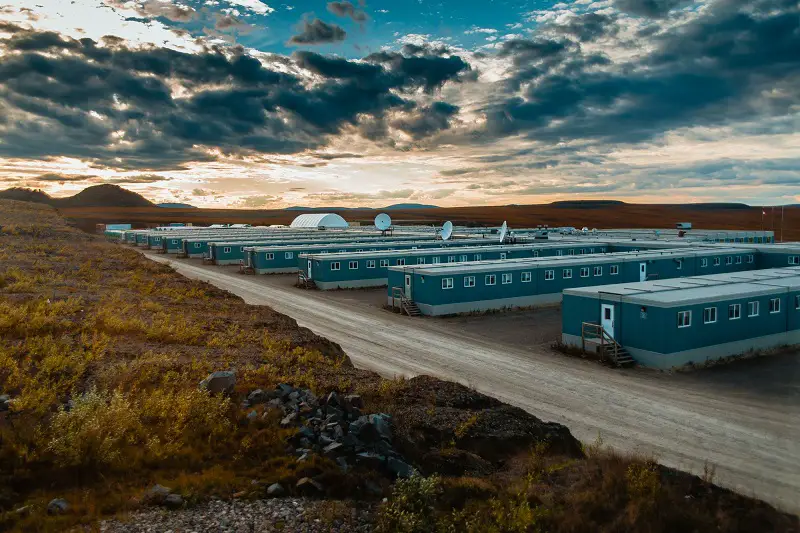Oil, mining, and construction operations typically require working in remote locations. In these regions, workers can be exposed to extreme weather conditions. Being far from establishments also requires companies to provide comfortable temporary housing and other essential facilities to ensure everyone’s comfort and safety.
Looking for reliable remote workforce housing can be challenging. One must prioritize the workforce’s health and safety while keeping the operations efficient. Therefore, setting high standards as you weigh your options is imperative. Here are the crucial features to look for in reliable remote workforce housing.

- Durable
Durability is one of the top priorities when looking for reliable remote workforce housing. The structure must withstand extreme conditions, primarily if you’re operating amidst the Arctic or in the desert.
One of the best options for temporary workforce housing is fabric buildings. These structures are built with durable metal framing and waterproof tensile fabric, making them strong enough to protect your workforce. They’re also ideal for remote health facilities and storage.
Setting a high standard of durability is crucial to your operations. Getting the most durable workforce housing option keeps your operations efficient as you spend less time and expenses on construction and repairs.
- Safe And Comfortable
Safety and comfort are crucial in workforce housing. The whole team should have a space to rest and recharge after a tiring day. Comfy sleeping, lounging, and dining are essential to overall wellness. Some factors to consider are the following:
- Efficient Heating, Ventilation, And Air Conditioning (HVAC): A workforce housing with an efficient HVAC system is crucial to workers’ safety and comfort, especially amidst harsh weather. It should provide clean and healthy air while maintaining the right indoor temperature despite the extreme outdoors.
- Proper Lighting: Lighting is a crucial factor in following workplace safety standards. A well-lit space helps prevent accidents and enables faster emergency response.
- Ample Space: Each structure has an ideal capacity, and it must be followed at all times. Crowded spaces may negatively impact workers’ wellness. Maintaining privacy is also a significant concern.
A safe and comfortable workforce housing should supply clean air, maintain proper temperature, be equipped with ample lighting, and have enough room for movement.
- Weatherproof
Since the operations are commonly located in regions with extreme weather conditions, weatherproofing is imperative. Weatherproof housing can protect your workforce from snowstorms, sandstorms, heat, and rain.
Trusted workforce accommodation suppliers provide weatherproof housing solutions for various applications and locations. For instance, you can look for modular structures, like fabric buildings and container houses with rigid insulation.
Furthermore, weatherproofing is crucial to building health facilities. Workforce housing provides more than just a place to rest and sleep. It includes all necessary services to promote wellness.
- Energy-Efficient
Working in remote locations typically comes with challenges in energy consumption. In most cases, these areas are off-grid. Therefore, alternative electricity sources are required. But these alternatives are commonly limited.
This means reliable workforce housing should be energy-efficient. One factor that helps save energy is proper insulation. For instance, well-insulated fabric structures help reduce power consumption by maintaining the temperature. This way, the air conditioning unit works more efficiently without using excessive electricity.
Another way to achieve energy efficiency is to utilize natural lighting. Workforce housing with skylights and right-sized windows helps maximize the sunlight during the daytime, reducing power consumption on lighting.
- Easy Transport
Transporting construction materials to remote locations is one of the toughest challenges in building temporary workforce housing. Therefore, finding one that’s easy and quick to transport is best.
Modular structures such as fabric and flat-packed buildings are the top choices due to their convenience. These lightweight housing options occupy less space, making them easier to transport even in remote locations.
Choosing remote workforce housing that’s easy to transport can also lessen your overall expenses, making it more cost-effective.
- Quick To Build
Building temporary housing in remote locations is time-consuming with the traditional construction method. Modular structures are preferable since they’re easy to transport and quick to assemble.
Modular housing is typically built within a few hours up to a week, depending on the size and complexity. Fabric structures are usually built within one to two days, while flat-packed houses can be ready in as fast as two hours.
- Low Environmental Impact
Keeping the environmental impact at a minimum is a sustainability standard across various industries. One step to achieve it is choosing reliable and eco-friendly workforce housing.
The typical brick-and-mortar construction may cause permanent damage to the environment. Since the operations may only last a few months or years, temporary structures are ideal.
Modular buildings require less land preparation. In some cases, excavations are unnecessary. When the operations are finished, you can easily disassemble and transport these structures to your next site without leaving a trace.
Conclusion
Ensuring your team’s safety while working in remote locations is possible by providing reliable workforce housing. Following strict quality standards helps you find the most practical solution.
Author Bio
This article is written by Vicki Ortega, a senior HR practitioner in Ohio since 2010. An avid contributor to online publications, she shares relevant domain knowledge arising from her role, particularly centered around helping and facilitating the needs of blue-collar workers in the sanitation and civic industries. In her spare time, she reads about other people’s experiences in fulfilling their respective careers.